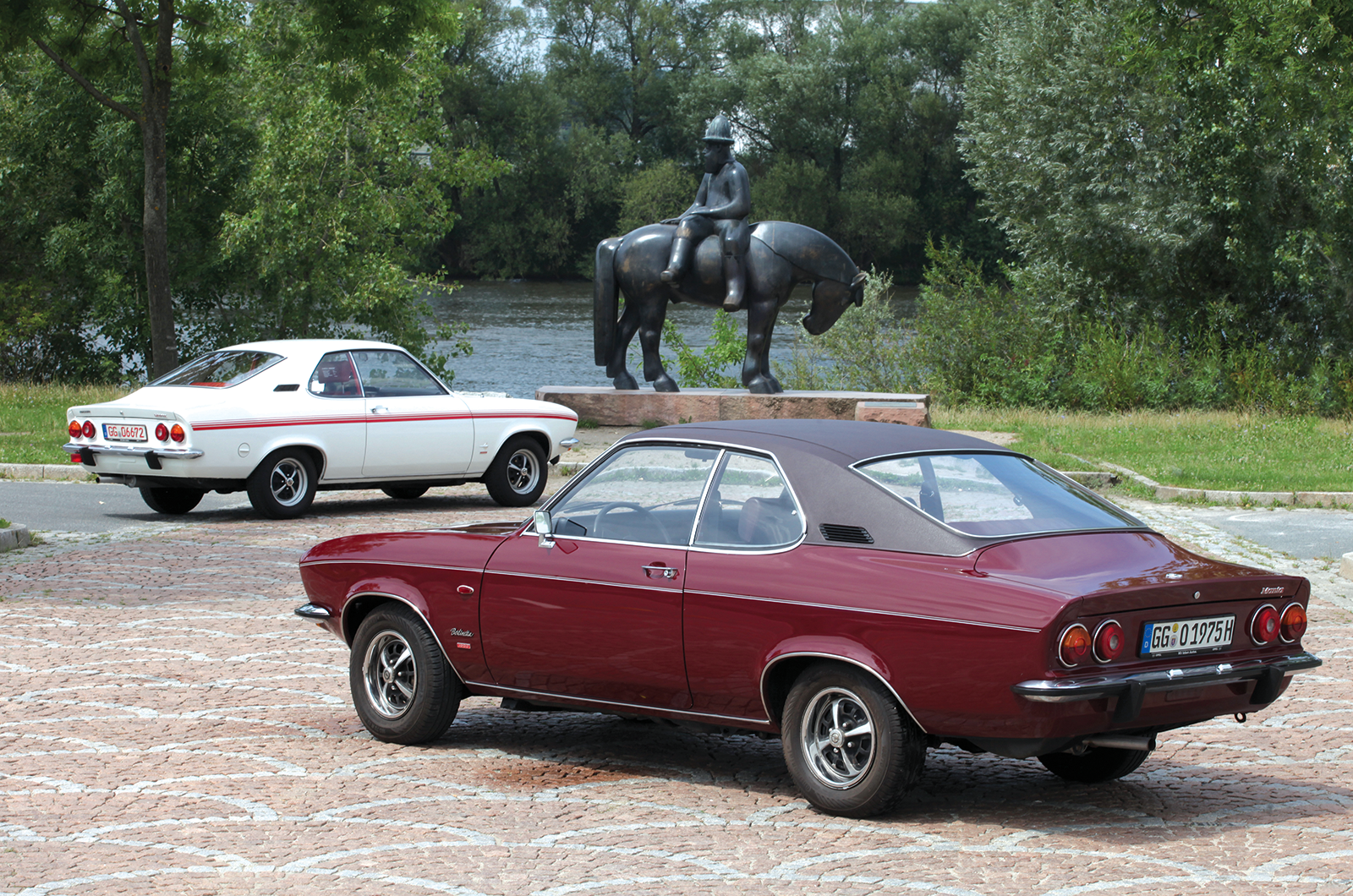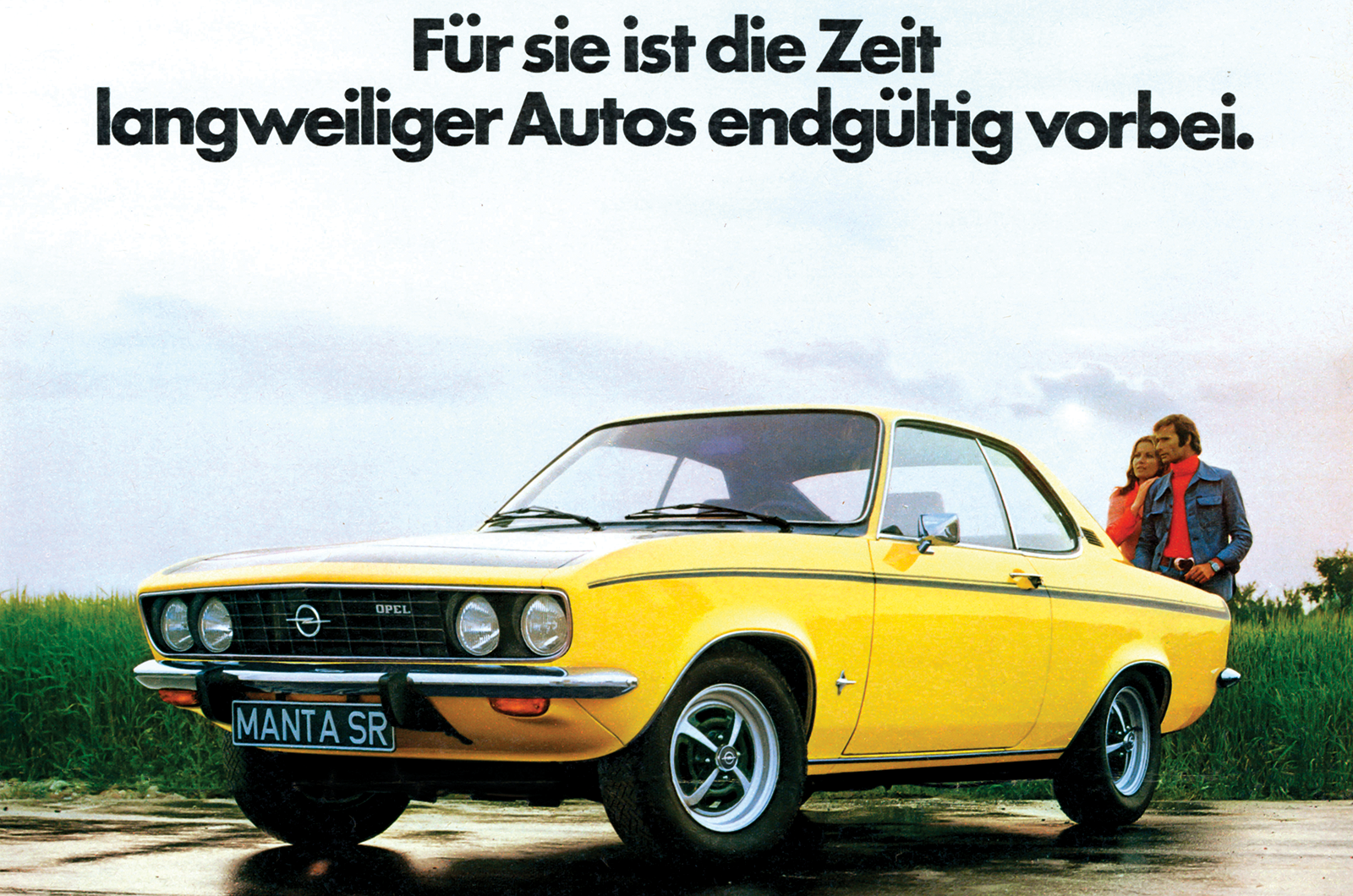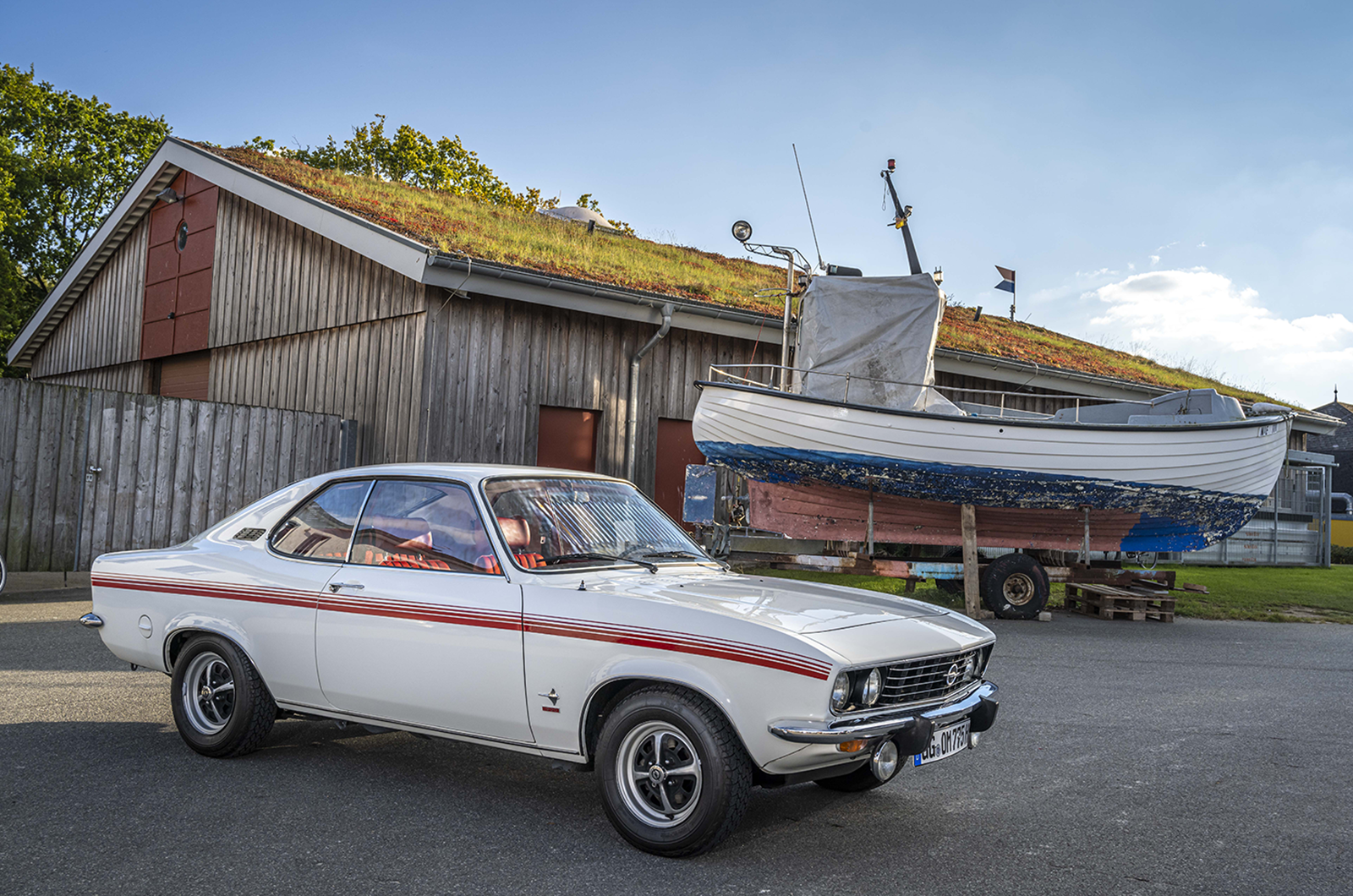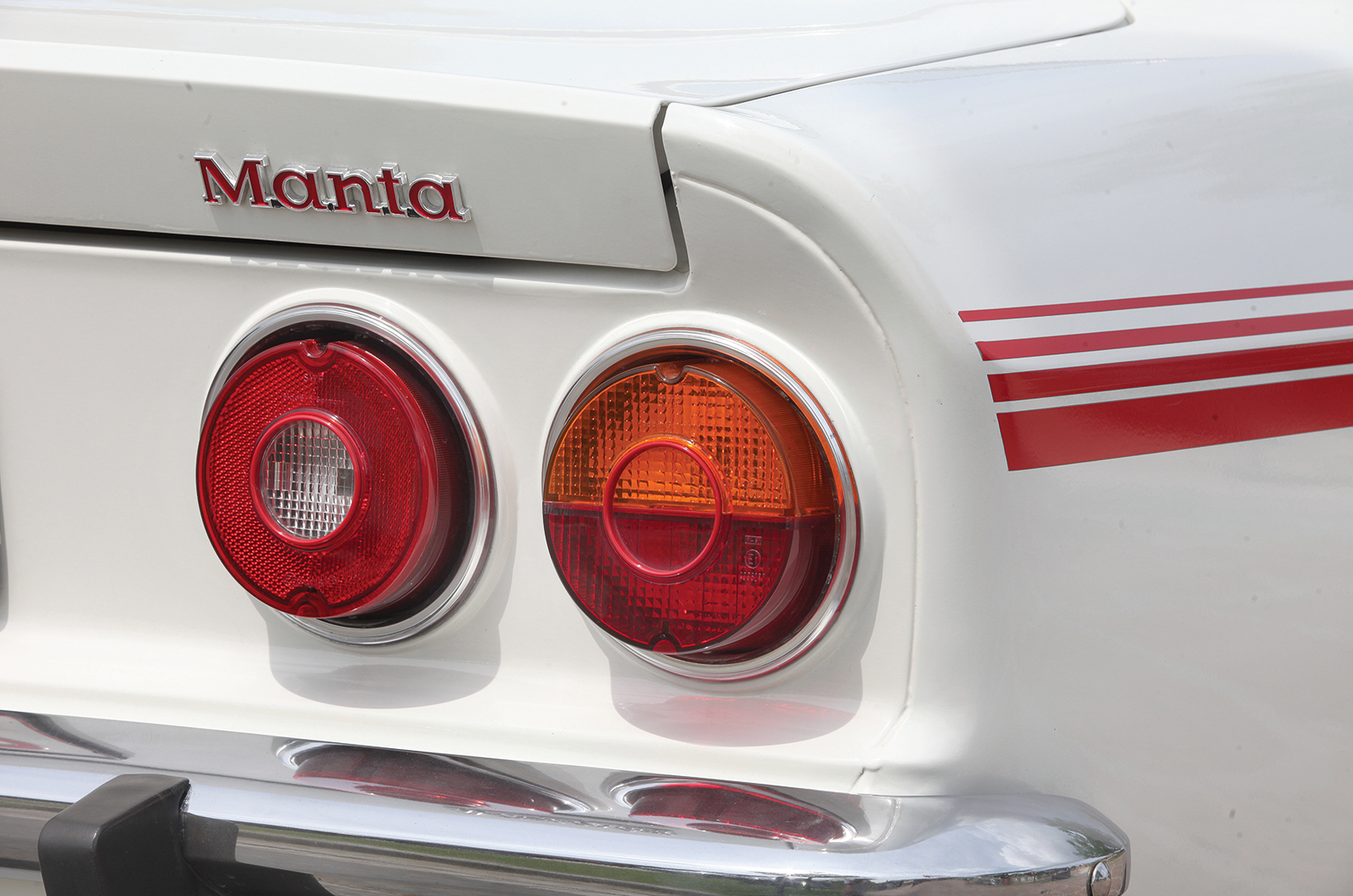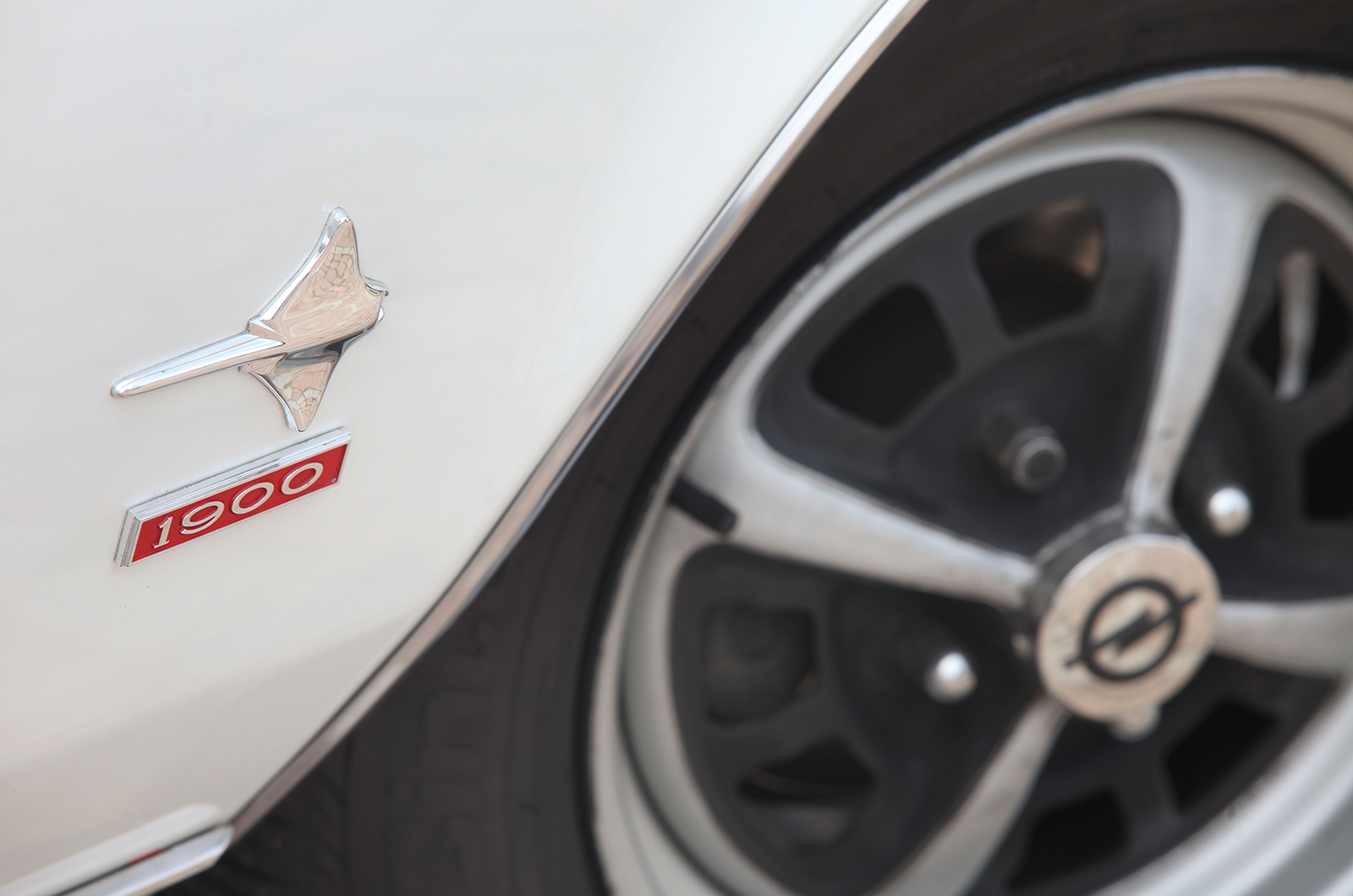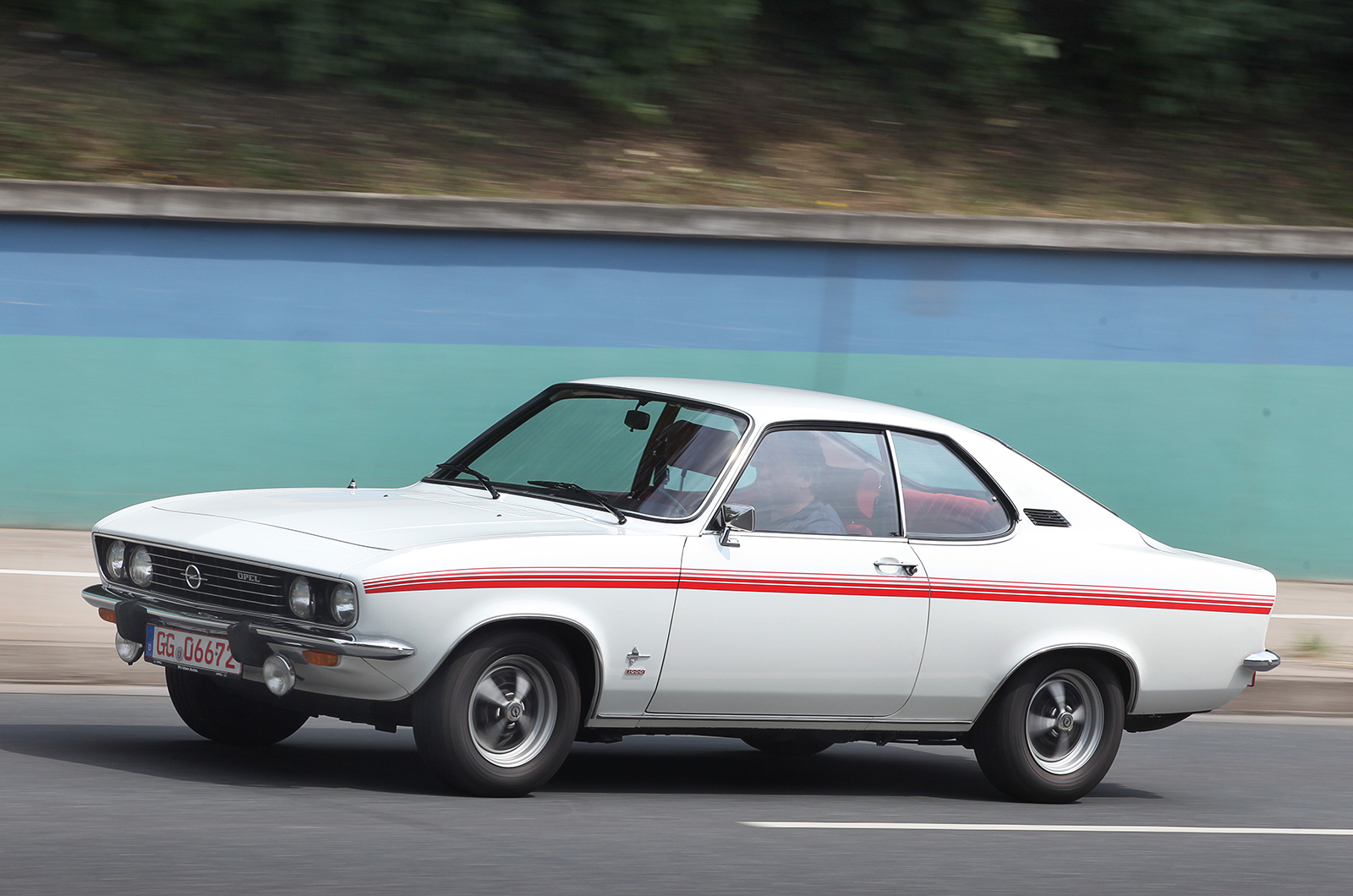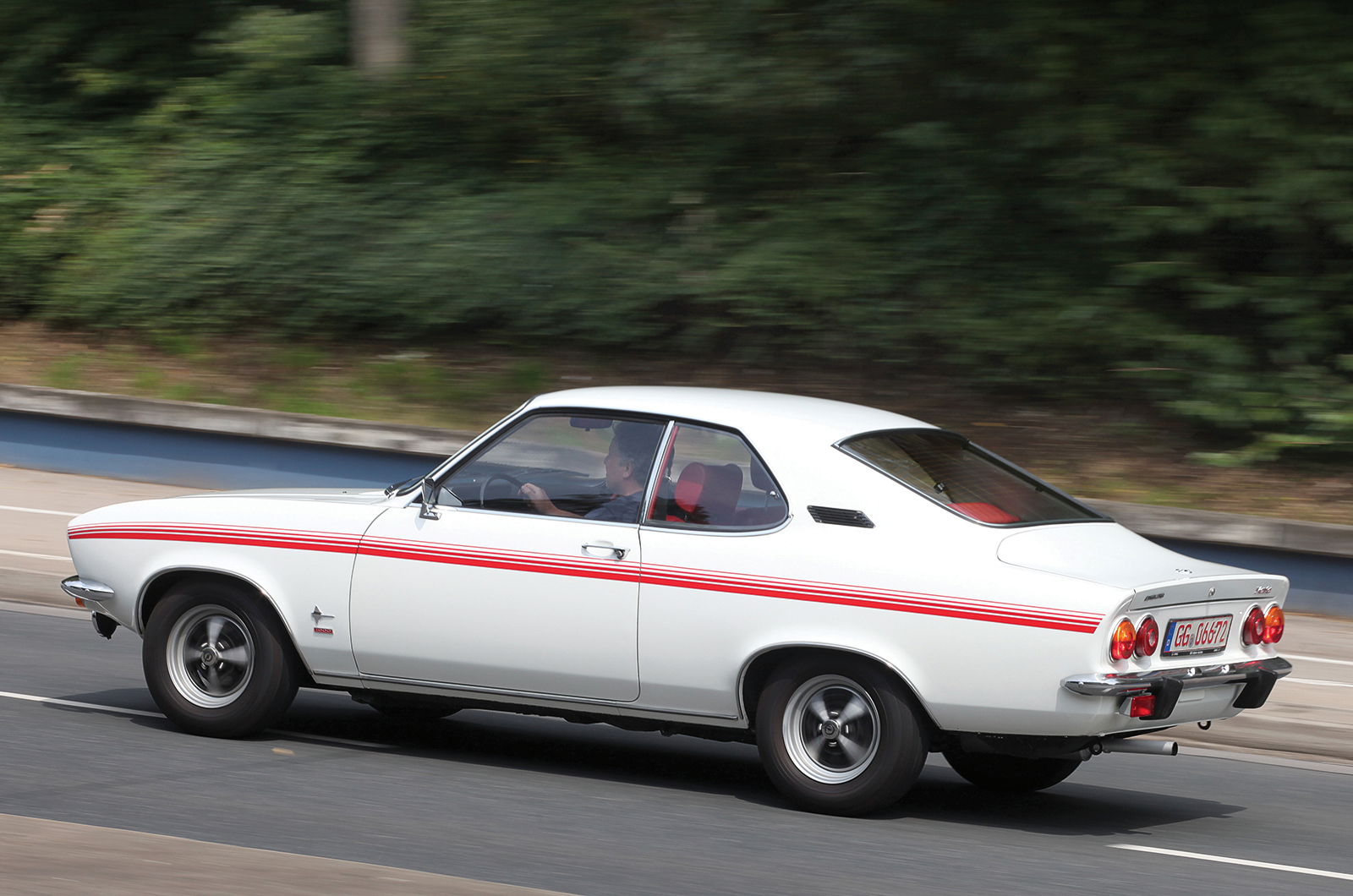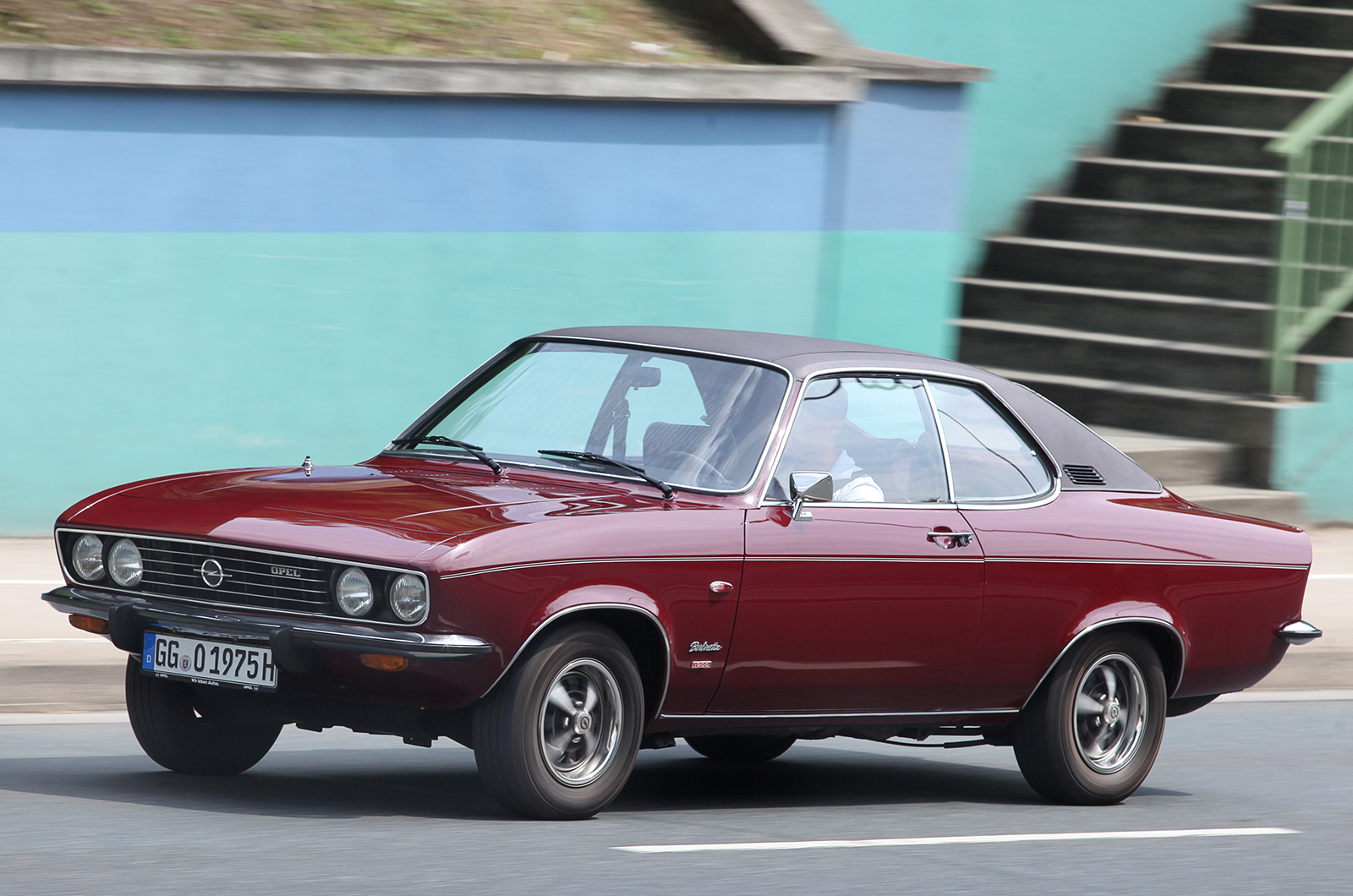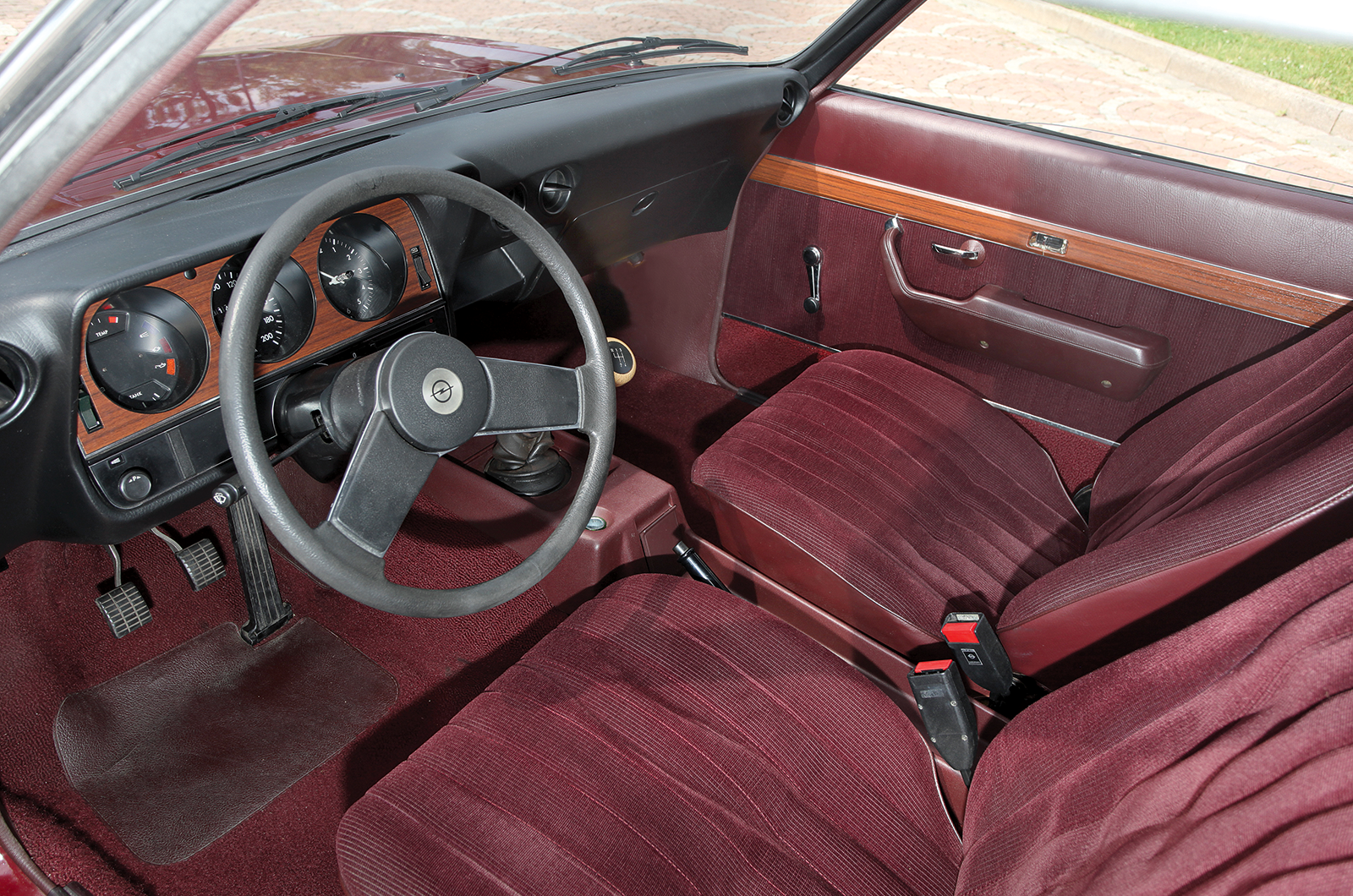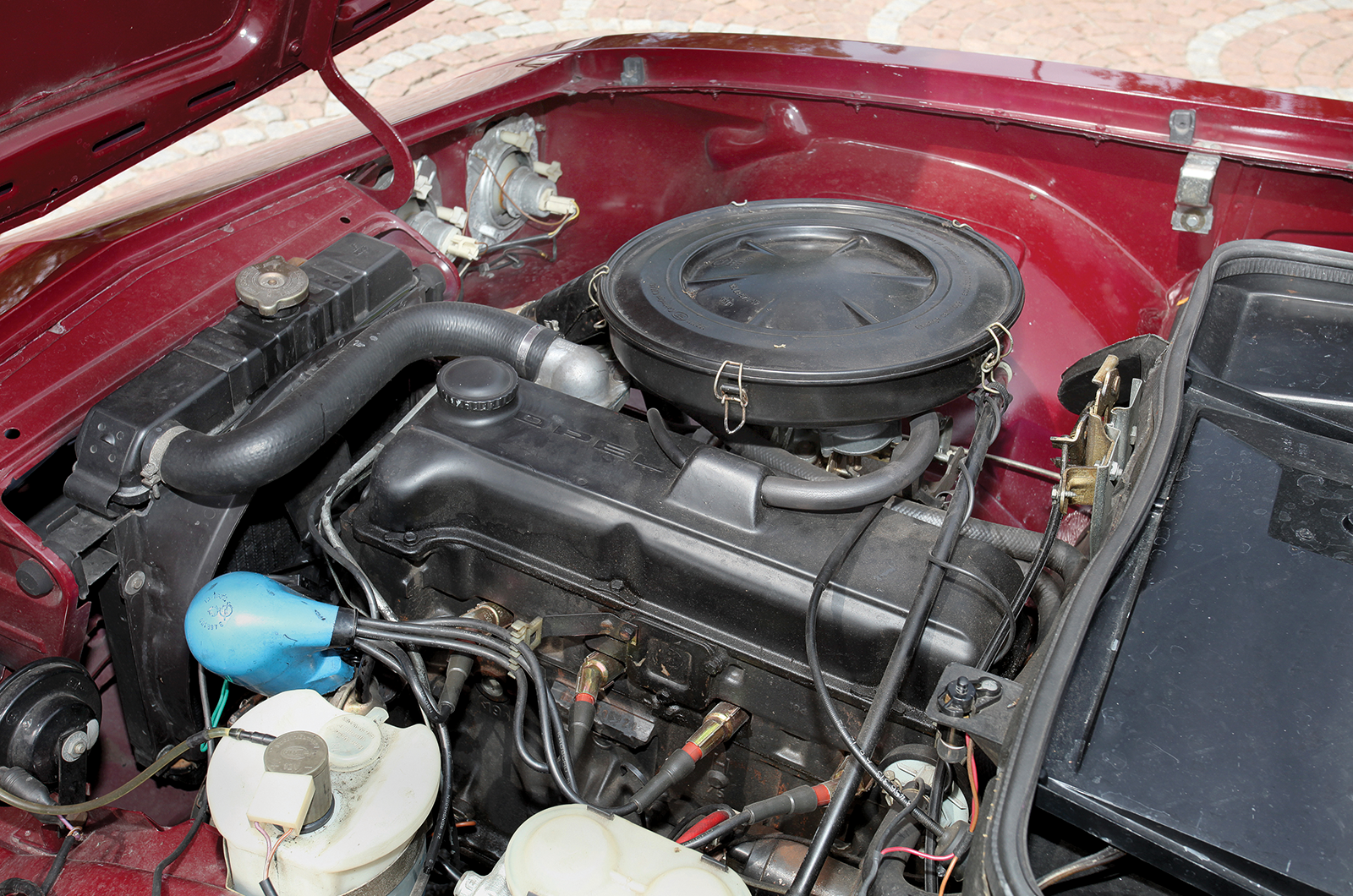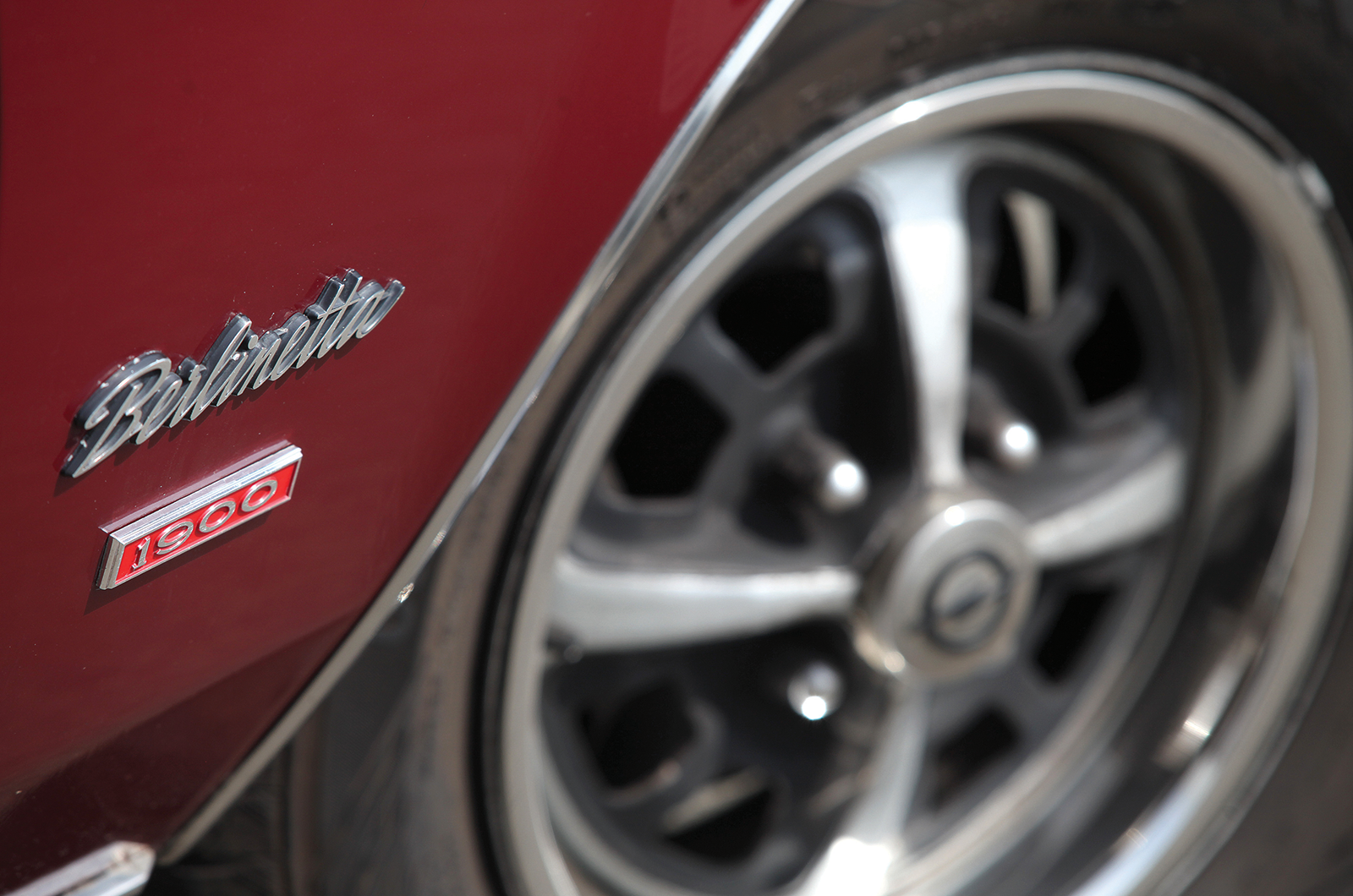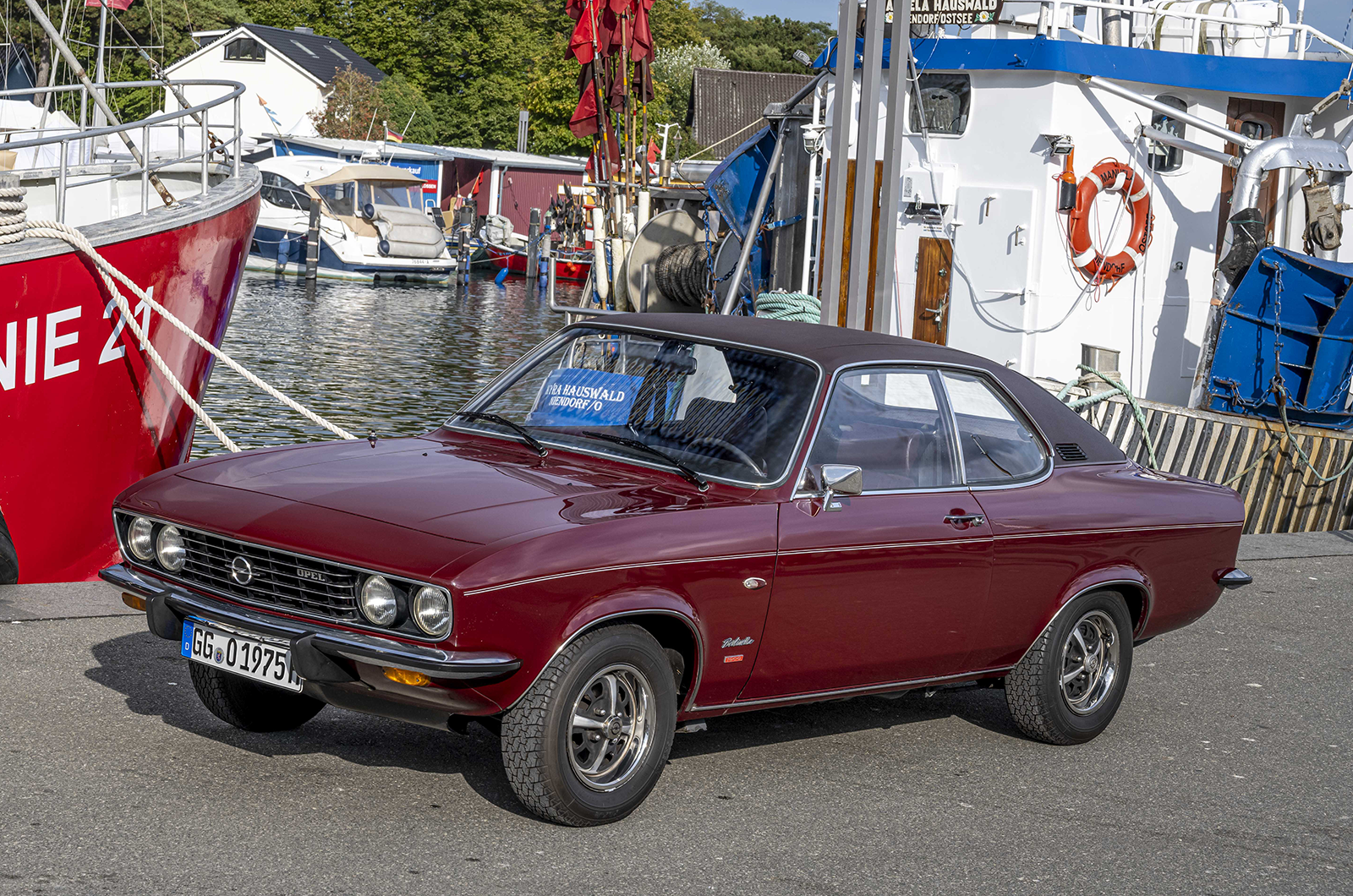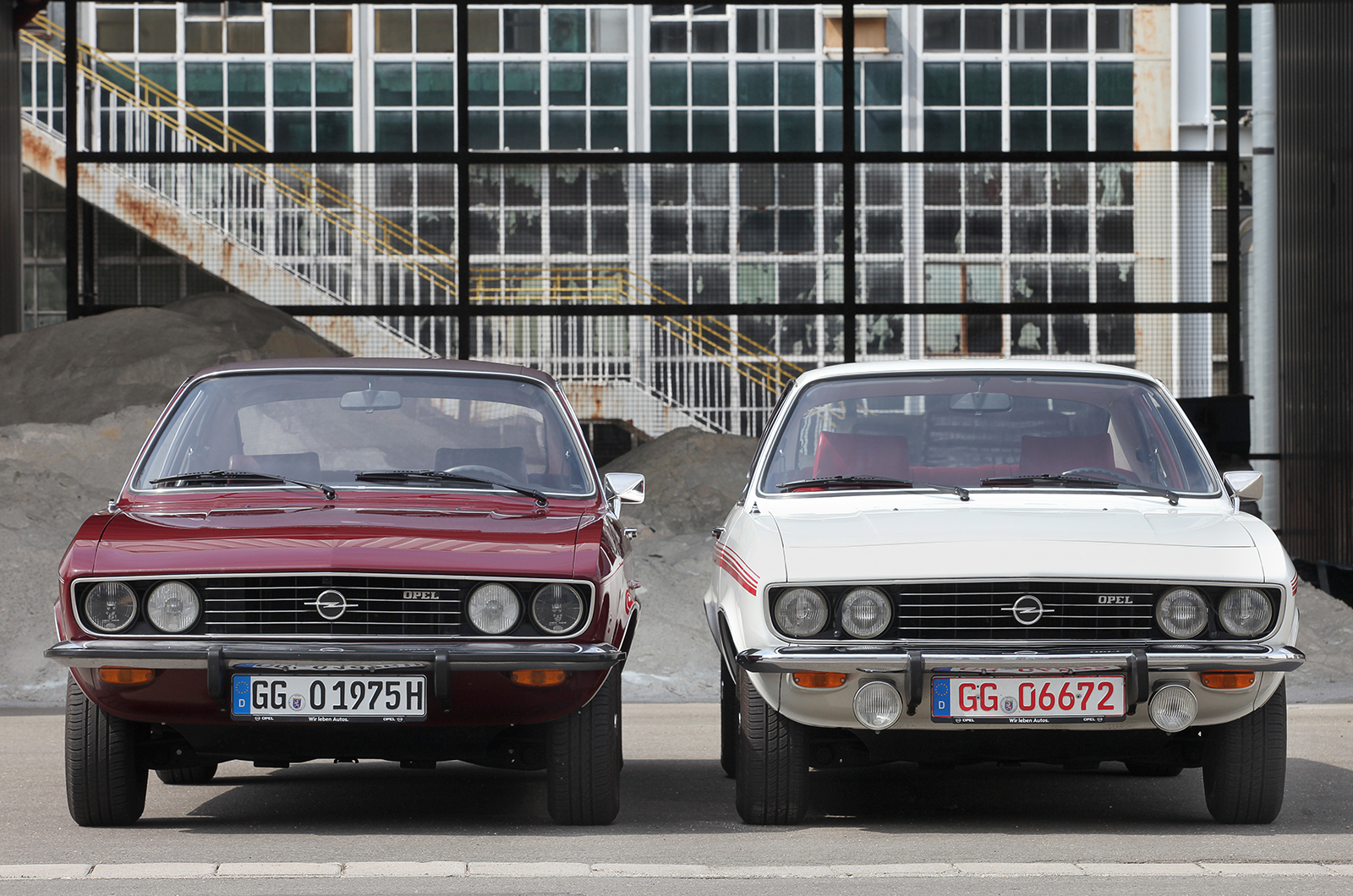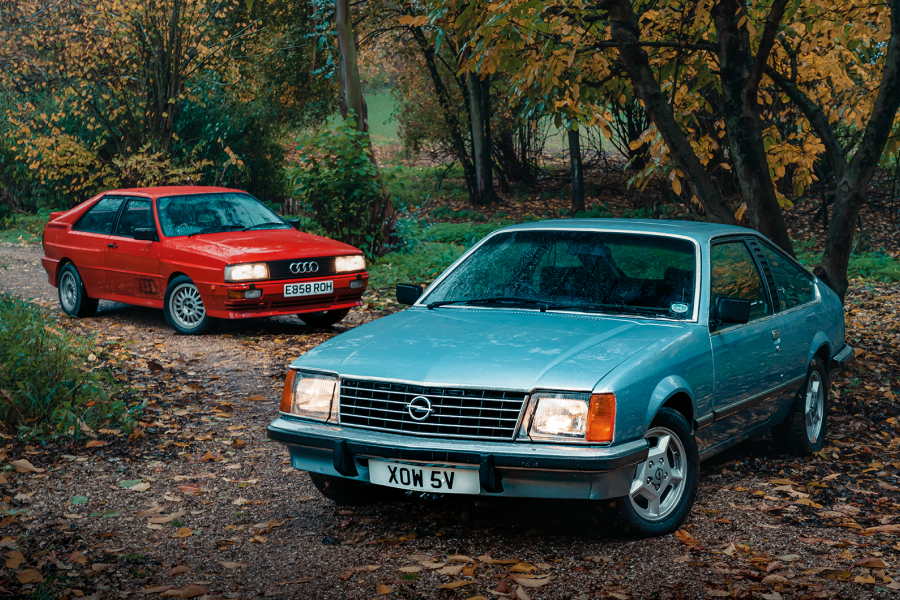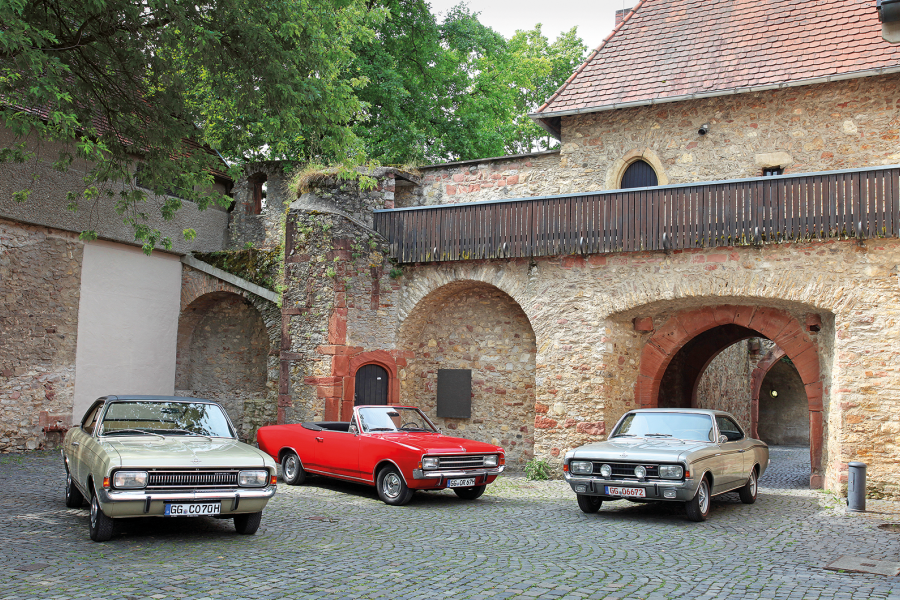The Swinger is a three-speed automatic, with bright red cloth trim and headrests on skinny seats that are rather more comfortable than they look.
Its doorcards are more primitive than the Berlinetta’s, which have plush, velvety facings and wooden inserts.
You make do with Opel’s all-purpose hard, shiny steering wheel on the two-pedal Swinger, whereas the Berlinetta has a chunky ‘sports’ item.
The switchgear – including the heater controls – is centred rationally around the instrument cluster, while the fat C-pillars that flow into the disappearing tail don’t hinder the all-round vision all that much.
UK-bound Opel Mantas tended to be in higher specifications
Low gearing and engines that get thrashy when extended mean that a Manta would not be your first choice for a dash across Europe – or even a sprint up your local autobahn – but judged as competitively priced, thoroughly competent transportation of 50 years ago, they are still willing, lively and stable cars that pull up straight and short, ride with appropriate firmness – without feeling harsh – and have less wind and road noise than you might expect.
The Berlinetta has a progressive clutch and a light, reasonably precise gearchange so you can deploy its ample torque to make smooth, sprightly progress; third will take you to something over 80mph if you are willing to endure the harsh tone of the engine when the second choke comes in.
Thanks to its willingness to kickdown, the automatic Swinger doesn’t feel at that much of a disadvantage on the road but, with fewer ratios to choose from, it leaves you less able to exploit the nifty chassis.
The Opel Manta A helped democratise the swoopy coupé concept
Both Mantas understeer just enough to maintain your confidence, with firm damping to help hold your line through steering that is more responsive than its 4.1 turns lock-to-lock would suggest.
They are agile and inherently safe, and offer no tricks to catch out the unwary.
Opel’s rallying prowess is steeped in the Ascona and Manta ‘B’, but you still sense the link to those cars in the Manta ‘A’, which proved that there was plenty of life left in traditionally contrived underpinnings.
In a ’70s world where it was by then well understood that a saloon could be made to handle as well as – perhaps even better than – a sports car, then a saloon-based coupé such as the original Manta couldn’t be a bad thing.
And if rare, luxurious and expensively engineered coupés were the birthright of names such as Lancia, Alfa and BMW, then Opel saw no reason why it shouldn’t have a piece of the action by selling the same dream at a price your parents could afford.
Images: James Mann
Thanks to: Opel Museum
Factfile
Opel Manta A
- Sold/number built 1970-’75/498,553
- Construction steel monocoque
- Engine all-iron, cam-in-head 1897cc ‘four’, single Solex carburettor
- Max power 90bhp @ 5100rpm
- Max torque 108Ib ft @ 2800rpm
- Transmission four-speed manual or three-speed automatic, RWD
- Suspension: front independent, by upper wishbones, lower transverse links, anti-roll bar rear live axle, trailing arms, torque tube, Panhard rod; coil springs, telescopic dampers f/r
- Steering rack and pinion
- Brakes discs front, drums rear, with servo
- Length 14ft 1in (4293mm)
- Width 5ft 4in (1626mm)
- Height 4ft 5½in (1359mm)
- Wheelbase 7ft 11¾in (2432mm)
- Weight 2111Ib (958kg)
- 0-60mph 12.2 secs
- Top speed 105mph
- Mpg 25
- Price new £1474
- Price now £10-15,000*
*Prices correct at date of original publication
Enjoy more of the world’s best classic car content every month when you subscribe to C&SC – get our latest deals here
READ MORE
Coupé conundrum: Ford Capri vs Datsun 240Z
Classic shrine: Opel Museum
25 great classic German coupés
Martin Buckley
Senior Contributor, Classic & Sports Car

